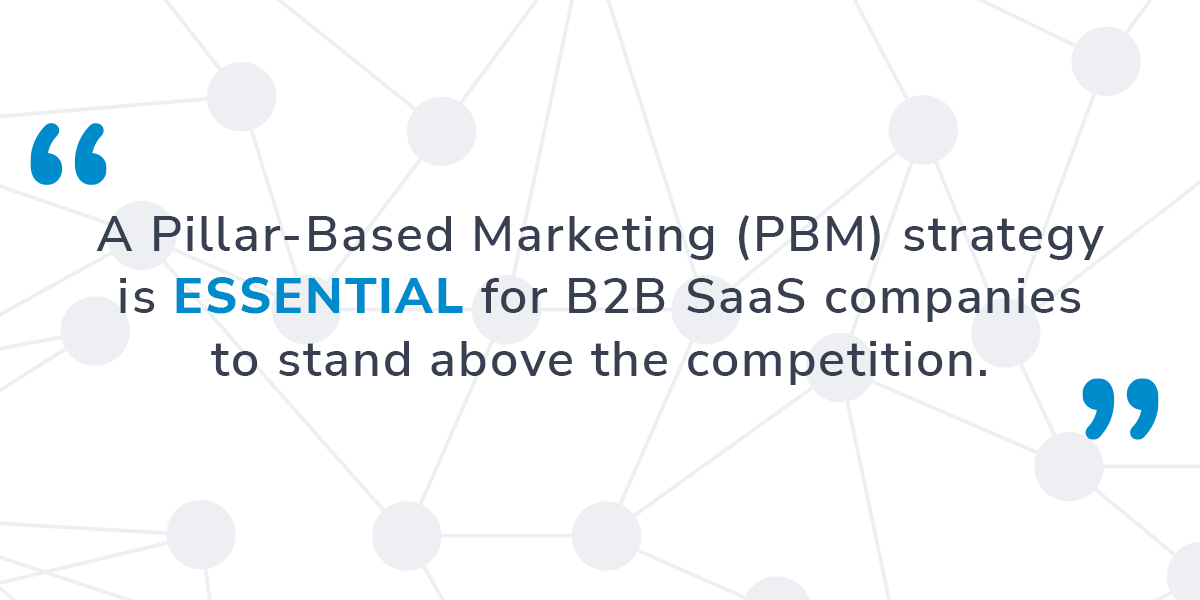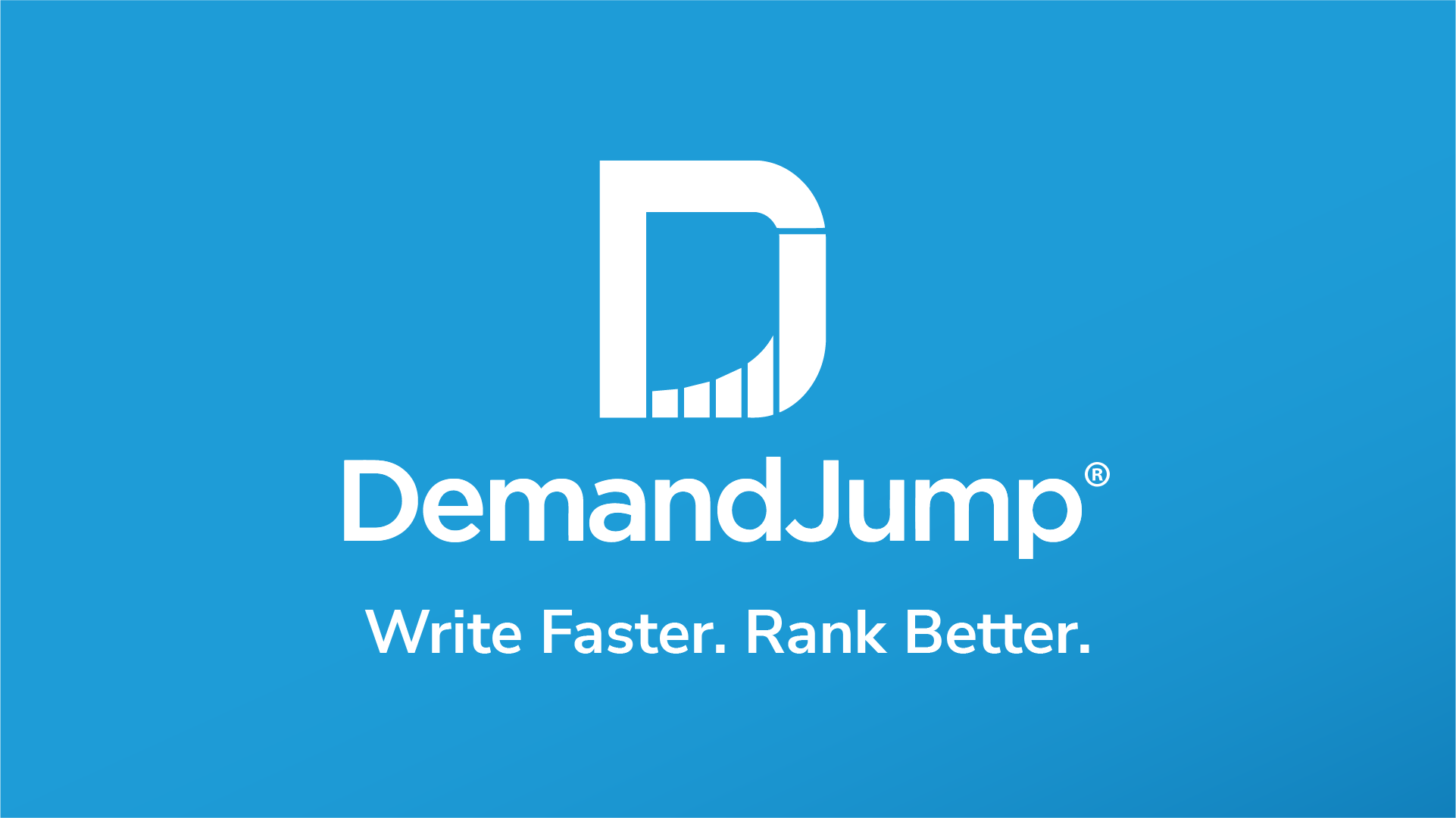All too often, B2B SaaS companies are stuck with outdated marketing strategies with an ROI that’s impossible to measure. That might be good enough in some industries, but in the highly competitive B2B SaaS market, your ability to communicate your value will make or break your business. By 2023, the B2B SaaS market size is projected to reach $208.1 billion—over double what it was in 2019. At the same time, nearly 400 new SaaS companies were founded in 2022, up from 114 new companies in 2020. In other words, the pie is getting bigger, but more hands than ever are competing to grab a slice.
B2B SaaS marketing. For some marketers, it’s an acronym soup. At DemandJump, it’s our bread and butter. In this guide, we’ll cover common marketing strategies for SaaS businesses, their strengths and weaknesses, and what you can do to cut through the noise.
What Is B2B SaaS Marketing?
B2B SaaS marketing educates businesses on what problems they’re experiencing that your software can solve, and why they should trust you to solve them over one of your competitors. Some B2B SaaS examples include:
- monday.com: This B2B SaaS company helps businesses manage projects with simple tools that any employee can use. Building up to their ad for the 2022 Super Bowl, monday.com created custom templates for planning a party for the Big Game. This successful SaaS marketing strategy example drew in project managers with a fun theme while showing off how straightforward their tools are.
- SurveyMonkey: SurveyMonkey powers online surveys for businesses to send out to gather the information they need to succeed. In a video ad featuring Serena Williams, SurveyMonkey shares all of the ways information helps businesses win by learning: how much customers are willing to pay, which benefits packages attract the best employees, and how current processes can be improved.
- DemandJump: DemandJump takes the guesswork out of content writing by telling businesses exactly which topics and questions their audience is searching. In an April Fool’s Day LinkedIn post, DemandJump promoted our topic generation software by announcing a (joke) partnership with HBO to help them rewrite their controversial last two seasons of the popular Game of Thrones TV show.

Like all industries, B2B SaaS businesses need to build a relationship with their audience based on trust and relatability. Still, there are some key differences when it comes to creating the best marketing strategies specifically for SaaS companies.
Why Is SaaS Marketing Different?
Marketing SaaS companies to businesses is different than marketing in other industries because:
- SaaS companies don’t have a physical product.
- B2B SaaS marketing goals focus on acquiring long-term, subscription-based customers.
- People are change-averse, especially when it comes to technology with a learning curve.
On the surface, these differences can seem straightforward, but there’s a lot to unpack here. Let’s take a closer look at the effects of these differences and how they impact a SaaS B2B marketing strategy:
- Software exists in code—potential customers can’t look at it the same way they could look at a new printer. And while most people have a general understanding of the cloud, it can still seem like this magical place where data just… goes. To convince a customer of your software’s service, you need to get them to try it. Because of the nature of SaaS, free trial periods, or freemium models, are often essential to persuade customers to get their hands dirty and see exactly what your software can do for them.
- You’re not just selling a product to a customer once—you have to prove your software’s value month to month and year to year to get customers to renew their subscriptions. For SaaS companies, this means constant innovation as well as marketing to two main audiences: new and existing customers. Messaging and calls to action are different for each audience. For example, new customers need to feel that they can quickly learn how to get value from your service and see results. Existing customers need to see consistent results and learn how to use the more advanced features of your service.
- Employees often resist new tech. As a B2B SaaS company, you’ll need to prove not only that your service can drive results, but that a business’ employees will be able and willing to use it effectively. As a result, SaaS marketing strategies often heavily feature educational content, such as blogs and demonstration videos. Older, larger companies will also have a lot of data and processes tied up in outdated, legacy systems. For this audience, you’ll need to prove that your service is either worth the monumental effort to switch to or that it makes the transition seamless.
Your SaaS marketing needs to accomplish these goals, but what strategies can you use to get there?
What Are the Main Types of Marketing Strategies?
The main types of marketing strategies for B2B SaaS companies fall into four categories: organic content, paid advertising, direct outreach, and product marketing. Grab a bigger slice of the SaaS pie with marketing strategies that speak to your target audience.
 Organic Content
Organic Content
Organic content doesn’t cost anything to post (although it will likely cost to create). That means you only have to pay once for the content, while the benefits continue as long as the content stays on your website.
- Blogs: Long-form written content is a great tool for educating your customers on the problems you solve and why your service is their best solution. When written with high-value keywords and questions, blogs can also help you rank higher on search engine results pages (SERPs). Using a Pillar-Based Marketing (PBM) platform like DemandJump can tell you which topics to write about and the keywords and questions you should include to reach page one on search engines.
- SEO: Search engine optimization (SEO) goes beyond writing engaging blogs—it also extends to each page on your website and how well it runs. For example, adding high-value keywords and questions to your home, about us, and solutions pages will help your website rank higher. So will technical aspects of SEO, like optimizing your website’s speed (which will also improve user experience).
- Social Media: Posting to social media is free, and as you gain a following, you’ll have an audience that wants to learn about your company’s updates. By using different platforms, you can also target different demographics. For example, LinkedIn is one of the best platforms for developing B2B relationships.
Paid Advertising
Paid advertising can be a shortcut to your audience. To keep your ads running, however, you’ll need to continue paying.
- Search Engine: Paying for search engine ads can put you at the top of page one quickly. However, only 15% of searchers click on search engine ads, so this strategy is best paired with organic SEO content.
- Social Media: Advertising through social media platforms gives you access to powerful targeting tools, so you can tailor ads to different audiences. For example, through Facebook ads, businesses can target people based on their location, purchasing habits, interests, connections, and demographics.
- Retargeting: This advertising uses cookies to continue advertising to people who have visited your website or clicked on one of your ads. For example, if someone left your website to go to Facebook, your ad could pop up on Facebook’s sidebar.
Direct Outreach
Email can be a great way to send promotions and educational content directly to your audience.
- Email Drip Campaigns: With an email drip campaign, you can send emails targeted to your audience based on which stage of the customer journey they’re in. For example, after someone starts a free trial, you could send tips for using the available features.
- Email Newsletters: When people sign up for your email newsletter, they want to learn more about your service. This is the perfect opportunity to identify pain points and how your software can solve them.
What Is SaaS Product Marketing?
Product marketing is a SaaS marketing strategy that places the SaaS product or service itself as the driver for conversion and account expansions. For example, freemium account tiers allow customers to test out the basic version of your service, so they can see its value and then upgrade to a paid account. In-app educational videos also show customers how they can get more value by expanding their account.
What Is a SaaS Campaign?
The best B2B SaaS marketing campaigns combine strategies. For example, you could run a paid search engine ad to quickly get in front of searchers. When someone clicks the ad but then leaves your website, a retargeting strategy can keep your service top of mind. Then you could write blogs and share them on social media, so they get more engagement and rank higher.
An effective campaign also has each piece working toward your marketing goals. For example, if you want to drive conversions, the calls to action in your blog posts should be to start a trial or schedule a demo.
How Do You Create a Marketing Strategy for SaaS?
A Pillar-Based Marketing (PBM) strategy is essential for B2B SaaS companies to stand above the competition. Why? Because having a network of content that covers related topics helps you reach page one of SERPs (over 50% of traffic goes to the first three results).

Does PBM replace other marketing strategies? No—organic content works best when paired with other strategies like advertising on social media. However, PBM can replace the hours you spend trying to figure out what to write about and the months you spend trying to figure out if it’s working. DemandJump takes the guesswork out of content marketing by showing you exactly what people are searching, what your competitors are ranking for, and which keywords and questions you should include in each blog to reach page one.
Ready to blast past the competition? Let’s get to work.












